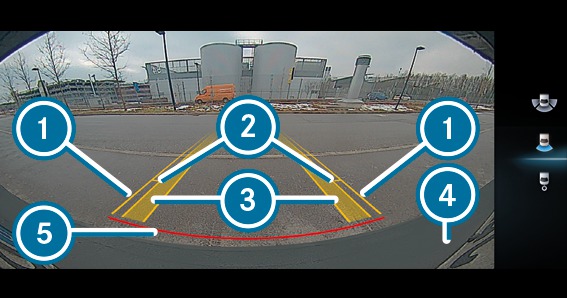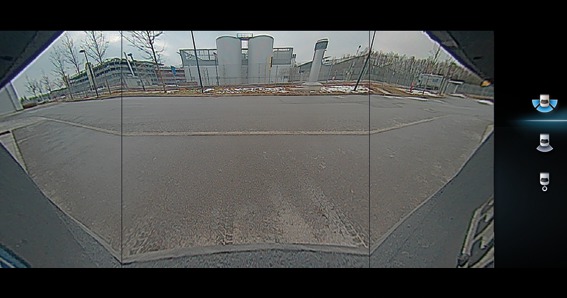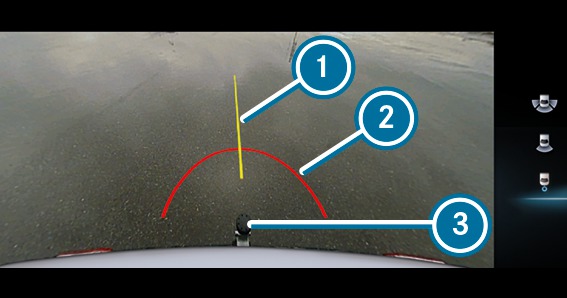The reversing camera is located next to the tailgate handle and is protected from raindrops and dust by means of a flap. When the reversing camera is activated, this flap opens More.
The flap closes again when you have ended the manoeuvring process or you switch off the engine.
For technical reasons, the flap may remain open briefly after the reversing camera has been deactivated.
You can activate the automatic display function of the reversing camera in the multimedia system. When you engage reverse gear, the image from the reversing camera is shown automatically in the media display. Dynamic guide lines show the path the vehicle will take for the current steering movement. This helps you to orientate yourself and to avoid obstacles when reversing.
The reversing camera is only an aid. It is not a substitute for you paying attention to the surroundings. You are always responsible for safe manoeuvring and parking. Make sure that there are no persons, animals or objects etc. in the manoeuvring area while manoeuvring and parking in parking spaces.
You can use the softkeys located below or to the side to choose between the following views:











Observe the notes on cleaning and care of the reversing camera More.
The reversing camera may show a distorted view of obstacles, show them incorrectly or not at all. The reversing camera cannot show all objects which are very near to or under the rear bumper. It will not warn you of a collision, people or objects.
The area behind the vehicle is displayed as a mirror image, as in the inside rearview mirror.
When you shift out of reverse gear, the dynamic guide lines are faded out. If, after shifting out of reverse gear, you drive faster than 16 km/h, the reversing camera is deactivated.
if the tailgate is open
if there is heavy rain, snow or fog
if the light conditions are poor, e.g. at night
if the area is illuminated with fluorescent lighting (the media display may flicker)
if the temperature changes very quickly, for example, if you drive out of the cold into a heated garage in the winter
if the ambient temperature is very high
if the camera lens is covered, dirty or misted up. Observe the notes on cleaning the reversing camera More.
the camera or rear of your vehicle is damaged. In this event, have the camera, its position and its setting checked at a qualified specialist workshop.
The field of vision and other functions of the reversing camera may be restricted due to additional accessories on the rear of the vehicle (e.g. rear bicycle rack).
The media display contrast may be impaired due to direct sunlight or other light sources. In this case, pay particular attention.
Have the media display repaired or replaced if, for example, pixel errors considerably restrict its use.
the bumper of a vehicle parked behind
the drawbar of a trailer
the ball neck of a trailer hitch
the tail-end of a lorry
slanted posts
Only use the guide lines of the camera image for orientation. Do not travel further than the lowest horizontal guide line when approaching objects. You may otherwise damage your vehicle and/or the object.
The guide lines at road level or at the level of the trailer coupling will then not be displayed correctly.

